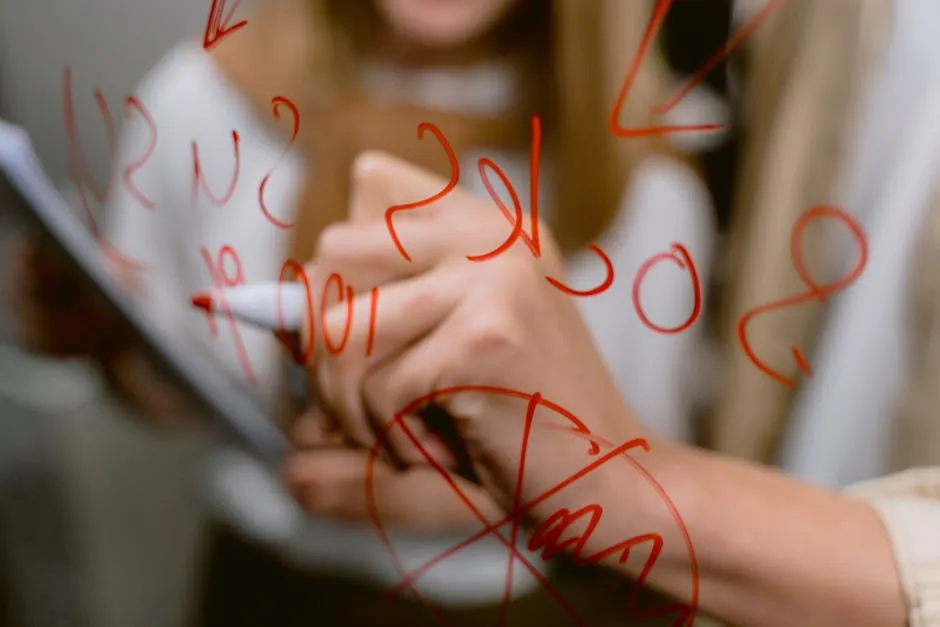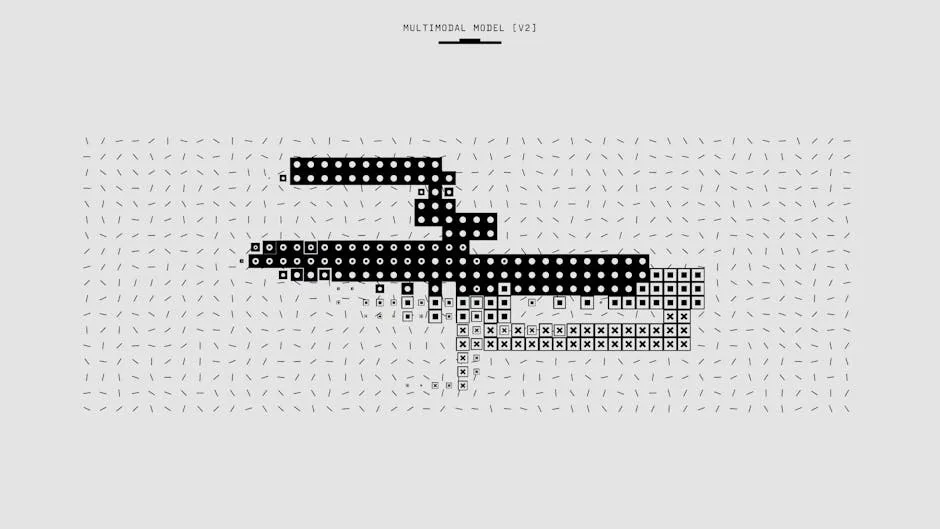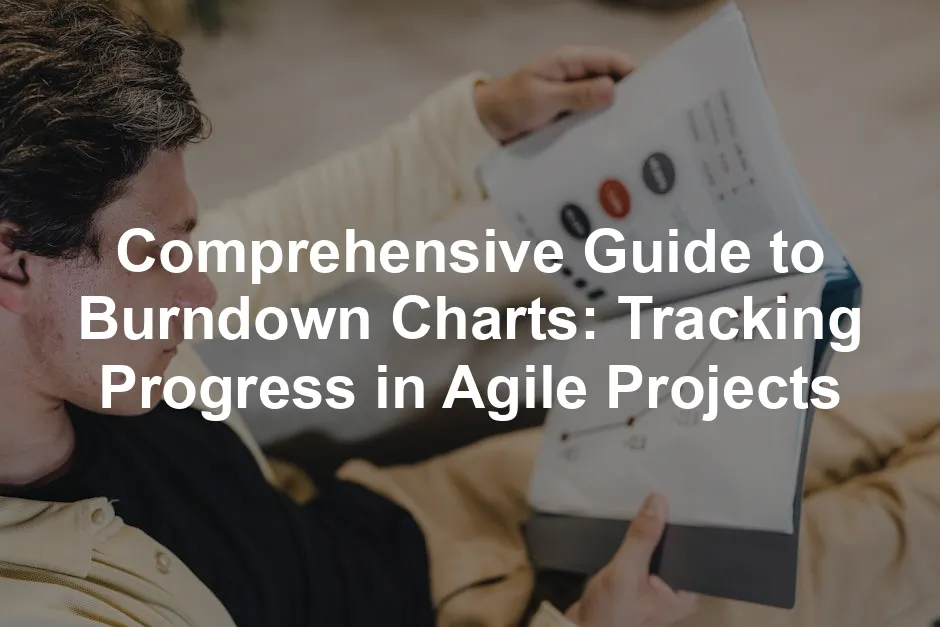Introduction
A burndown chart is a crucial project management tool. It helps visualize remaining work against a timeline. This chart enhances team efficiency and boosts project transparency. By tracking progress, teams can identify areas for improvement and stay on target.
If you’re looking to dive deeper into Agile methodologies, consider picking up Agile Estimating and Planning by Mike Cohn. This book provides invaluable insights into making your Agile processes even more effective.
Summary and Overview
A burndown chart visually represents work left to do versus time. Typically, the vertical axis shows outstanding work, while the horizontal axis indicates time. It’s widely used in Agile methodologies like Scrum. The chart includes two important lines: the ideal work line and the actual work line. The ideal line slopes downwards, indicating the perfect pace of progress. In contrast, the actual line fluctuates based on team performance. Additionally, some teams use burnup charts, which focus on completed work instead of work remaining. Both charts serve unique purposes for project tracking.
To boost your team’s productivity, consider utilizing Jira Software Essentials by Andrew Hunt. This resource will help your team effectively implement Jira for managing projects and tracking progress.

What is a Burndown Chart?
A burndown chart is a graphical tool that displays project progress. Its components include the X-axis for time and the Y-axis for work remaining. It features an ideal work line and an actual work line. The chart is vital in Agile project management, helping teams visualize their progress and adjust plans accordingly. Understanding the burndown chart definition is crucial for effective Scrum tools.
Looking for a practical guide? Check out Scrum: The Art of Doing Twice the Work in Half the Time by Jeff Sutherland. It’s a fantastic read that can help you master Scrum and enhance your team’s efficiency.
How to Read a Burndown Chart
Reading a burndown chart involves interpreting the two lines. The ideal work line shows the expected progress, while the actual work line reflects what has been completed. A steeper slope indicates faster progress, whereas a flatter slope suggests delays. Understanding these slopes helps teams assess their performance and make necessary adjustments.

Purpose of a Burndown Chart
A burndown chart serves several essential functions in project management. First, it allows for effective progress tracking. Teams can easily see how much work remains and how quickly it’s being completed. This transparency fosters accountability and helps everyone stay aligned on goals.
Second, it provides predictive analysis. By comparing the actual work line to the ideal line, teams can forecast whether they will meet deadlines. This insight is crucial for timely interventions if necessary.
Third, burndown charts help identify issues early. Deviations from the ideal line can signal potential delays or roadblocks. Addressing these issues early can prevent bigger problems down the road.
Finally, these charts boost team motivation. Visualizing progress can energize team members by showcasing their contributions to the project. Seeing work decrease can create a sense of accomplishment, driving teams to maintain their momentum. Overall, burndown charts are invaluable project tracking tools that enhance team performance and deliver better outcomes.

If you’re keen on innovating your startup approach, The Lean Startup by Eric Ries is a must-read. It teaches you how to build and manage successful startups while minimizing waste.
Advantages of Using a Burndown Chart
Burndown charts offer numerous advantages for teams using Agile methodologies. One significant benefit is their visual representation of progress. This makes it easy for team members to grasp where they stand at any point in time.

Another advantage is the early detection of potential delays. If the actual work line deviates significantly from the ideal line, teams can take immediate action. This proactive approach helps keep projects on track.
Additionally, burndown charts enhance team collaboration and accountability. When everyone can see the progress, it encourages open communication. Team members can support each other in meeting goals and deadlines.
The benefits of burndown charts extend beyond simple tracking. They also empower teams to adapt and respond to changing circumstances effectively. This flexibility is one of the key Agile advantages that help teams succeed.
Common Pitfalls and Limitations
While burndown charts are useful, they come with common pitfalls. One frequent mistake is inaccurate estimations. If the initial estimates for tasks are off, the chart will misrepresent progress.
Another issue arises from improper updates. Teams must consistently update the chart to reflect real progress. Neglecting this can lead to confusion and miscommunication.
Burndown charts may also be less effective in certain scenarios. For example, if project scope changes frequently, the chart can become misleading. Teams might find it challenging to keep the chart aligned with evolving tasks.
Recognizing the challenges of burndown charts is essential for effective usage. By understanding these limitations, teams can avoid common mistakes and improve their Agile tools for better project management.

Learn about the common pitfalls in parametric statistics assumptions for healthcare data analysis to avoid mistakes in your project management.
Using Burndown Charts in Jira
To access burndown charts in Jira, follow these simple steps. First, log in to your Jira account and navigate to your project. Next, select the Scrum board linked to your project. Click on “Reports” in the left sidebar and choose “Burndown Chart.” You can select a specific sprint from the dropdown menu.
Using Jira burndown charts offers significant benefits. They provide a clear visual of your team’s progress during a sprint. This insight helps you track remaining work versus time. As a result, you can easily see if your team is on pace to complete tasks by the deadline.

Integrating burndown charts into your project tracking enhances transparency. Everyone on the team can stay informed about current progress. This shared visibility fosters collaboration and accountability. Teams can quickly identify potential issues and adjust plans as needed.
If you’re looking for a solid foundation in project management, Project Management for Dummies by Stanley E. Portny is a fantastic resource that breaks down essential concepts and practices.
Burndown Chart vs. Burnup Chart
Burndown charts and burnup charts serve different purposes in project management. A burndown chart focuses on the amount of work remaining. In contrast, a burnup chart highlights completed work over time.
When to use each type depends on your project needs. If you want to track work left to do, opt for a burndown chart. However, if you prefer to visualize progress, the burnup chart is ideal.

Understanding the differences between burndown and burnup charts can help teams choose the right tool for their project. Burnup charts also manage scope changes better, offering a clearer picture of overall progress.
Best Practices for Using Burndown Charts
To effectively implement burndown charts in Agile teams, consider these best practices. First, ensure regular updates. Update the chart daily to reflect the most accurate progress.
Engage your team in the process. Encourage team members to contribute to the chart updates. This involvement fosters a sense of ownership and commitment.
Set clear goals and expectations. Discuss progress during daily stand-ups to address any concerns. This communication keeps everyone aligned and motivated.
Utilize burndown charts as a tool for reflection. Use them during sprint retrospectives to analyze performance. Discuss what went well and what could improve.
By following these best practices, teams can maximize the effectiveness of their Agile metrics. This approach leads to more efficient project tracking and better outcomes.
For more insights, check out the best practices for using Israel Central Bureau of Statistics data visualization.
Conclusion
Burndown charts are essential in Agile project management. They provide clear visual insights into progress and remaining work. By tracking tasks against time, teams can quickly identify issues. This tool fosters transparency and keeps everyone aligned on goals. When teams adopt burndown charts, they enhance efficiency and accountability. As a result, project outcomes improve significantly. Using this tool effectively can lead to successful project completions and satisfied stakeholders. Embrace the power of burndown charts for better project management today!

For those interested in enhancing team dynamics, consider reading The Five Dysfunctions of a Team by Patrick Lencioni. It’s a fantastic read that provides insights into overcoming common team challenges.
FAQs
What is a burndown chart?
A burndown chart is a visual tool in project management. It shows remaining work versus time, helping teams track progress.
How often should a burndown chart be updated?
Update the chart daily for accurate tracking. Frequent updates ensure it reflects real-time progress.
What are the key components of a burndown chart?
Key components include the X-axis (time), Y-axis (work remaining), ideal work line, and actual work line.
Can burndown charts be used outside of Agile projects?
Yes, burndown charts are versatile tools. They can be applied to various project management methodologies for monitoring progress.
Please let us know what you think about our content by leaving a comment down below!
Thank you for reading till here 🙂
All images from Pexels




